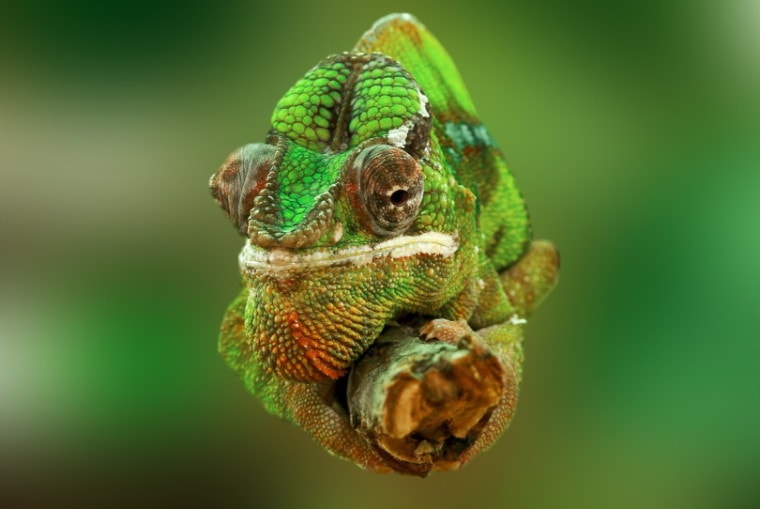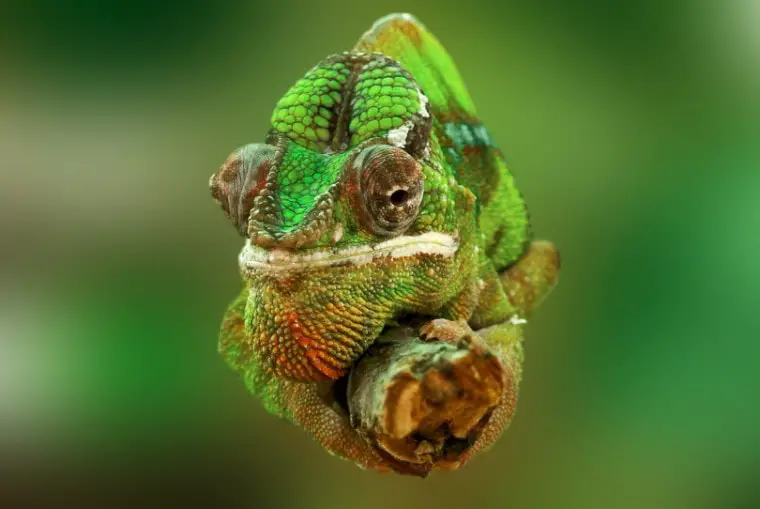Chameleons are fascinating creatures with a unique ability to change the color of their skin. They are known for their long, sticky tongues, bulging eyes, and slow movements. However, there is a common question that many people ask: are chameleons poisonous to humans?
Well, the simple answer is no, chameleons are not poisonous to humans. In fact, they are completely harmless and are not known to be a threat to humans in any way. However, there are some important things to keep in mind if you are planning to keep a chameleon as a pet or encounter one in the wild. Let’s explore the fascinating world of chameleons and learn more about these amazing creatures.

Are Chameleons Poisonous to Humans?
Chameleons are fascinating creatures with their ability to change color and blend in with their surroundings. However, many people wonder if they are poisonous to humans. In this article, we will explore the topic of chameleons and their potential toxicity.
Chameleons and their Toxicity
Chameleons are not poisonous to humans. They do not produce venom or any toxic substances that can harm humans. However, there are some species of chameleons that have been known to carry harmful bacteria, such as Salmonella, which can cause illness if transmitted to humans.
It is important to note that chameleons are not pets that can be handled frequently. They thrive in their natural habitat and are not meant to be kept as household pets. If you do choose to keep a chameleon as a pet, it is important to take proper precautions and hygiene measures to reduce the risk of bacterial infections.
Benefits of Chameleons
Chameleons play an important role in the ecosystem as they are natural predators of insects and other small prey. They are also fascinating creatures to observe and study. Their ability to change color and blend in with their surroundings has inspired many scientific studies on camouflage and color vision.
In addition, chameleons have unique adaptations such as their long tongues and independently moving eyes, which have also been studied for their potential applications in robotics and engineering.
Chameleons vs Other Reptiles
Compared to other reptiles such as snakes and lizards, chameleons are relatively harmless to humans. Snakes and some lizards can produce venom that can be deadly to humans, while most chameleons do not have this ability.
However, it is still important to take proper precautions when handling any reptile, as they can carry harmful bacteria and parasites that can cause illness.
Chameleon Species and their Characteristics
There are over 160 species of chameleons, each with their own unique characteristics. Some species are small and brightly colored, while others are large and more subdued in coloration.
Some species, such as the veiled chameleon, are popular as pets due to their unique appearance and ease of care. However, it is important to research the specific needs and requirements of each species before keeping them as a pet.
Chameleons in the Wild
Chameleons are found in a variety of habitats, from rainforests to deserts. They are primarily arboreal, meaning they live in trees and vegetation. Their ability to change color allows them to blend in with their surroundings and avoid detection by predators.
In the wild, chameleons play an important role in controlling insect populations. They are also preyed upon by birds, snakes, and other predators.
Chameleon Reproduction and Lifecycle
Chameleons reproduce through sexual reproduction, with males displaying bright colors and engaging in elaborate courtship displays to attract mates. Females lay eggs, which are typically buried in the ground or hidden in vegetation.
Chameleon hatchlings are independent from birth and must fend for themselves. They are able to climb and catch prey within hours of hatching.
Chameleons in Popular Culture
Chameleons have been featured in popular culture, from cartoons and movies to fashion and art. Their unique appearance and abilities have made them a popular subject for artists and designers.
One of the most famous chameleons in popular culture is Pascal from Disney’s “Tangled.” Pascal is a veiled chameleon who serves as the loyal sidekick to Rapunzel.
Chameleon Conservation
Many species of chameleons are threatened by habitat loss and poaching for the pet trade. Conservation efforts are underway to protect and preserve these unique creatures.
One of the main conservation efforts is to create protected areas for chameleons, such as national parks and reserves. Additionally, education and outreach programs are aimed at raising awareness about the importance of conserving these unique creatures.
Conclusion
In conclusion, chameleons are not poisonous to humans. However, they can carry harmful bacteria such as Salmonella, so proper hygiene and handling precautions are necessary when keeping them as pets. Chameleons play an important role in the ecosystem and are fascinating creatures to observe and study. Conservation efforts are necessary to protect these unique creatures for future generations to enjoy.
Frequently Asked Questions
Are chameleons poisonous to humans?
Chameleons are not poisonous to humans. They do not produce any venom or toxic substances that can harm humans. However, there are some precautions that you should take when handling chameleons, especially if you have an allergy to reptiles.
Chameleons have the ability to change their color and blend in with their surroundings. This is a defense mechanism that helps them avoid predators. However, some species of chameleons can also change their color as a means of communication. So, if you see a chameleon changing its color, it is not necessarily a sign that it is about to attack or become aggressive.
What should I do if I am bitten by a chameleon?
If you are bitten by a chameleon, you should wash the affected area with soap and water. Chameleon bites are not usually serious, but they can cause some pain and swelling. If you experience any symptoms such as fever, chills, or difficulty breathing, you should seek medical attention immediately.
It is important to note that chameleons are not aggressive animals and will only bite if they feel threatened or cornered. So, it is important to handle them with care and respect their space.
Can chameleons transmit diseases to humans?
Chameleons are not known to transmit any diseases to humans. However, like all reptiles, they can carry bacteria such as Salmonella, which can cause illness in humans. To reduce the risk of infection, it is important to wash your hands thoroughly after handling a chameleon or any other reptile.
If you have a weakened immune system or are pregnant, you should avoid handling reptiles altogether. It is also important to keep reptiles away from young children, as they are more susceptible to infections.
Do chameleons make good pets?
Chameleons can make good pets for people who have experience with reptiles and are willing to provide them with the care they need. However, they are not ideal pets for everyone, as they require a specialized diet, specific environmental conditions, and regular veterinary care.
Chameleons are also solitary animals and do not enjoy being handled or interacted with too much. So, if you are looking for a pet that you can cuddle and play with, a chameleon may not be the best choice for you.
What is the lifespan of a chameleon?
The lifespan of a chameleon can vary depending on the species and the conditions in which it is kept. Generally, chameleons can live for several years in captivity, with some species living up to 10 years or more.
To ensure that your chameleon lives a long and healthy life, it is important to provide it with a balanced diet, proper lighting and heating, and a clean and spacious enclosure. Regular veterinary check-ups are also recommended to detect and treat any health problems early on.
Are Chameleons Dangerous? The Full Guide For Owners
In conclusion, while chameleons may not be poisonous to humans, it is important to exercise caution when handling them. Chameleons have been known to carry harmful bacteria such as salmonella, which can cause serious illness in humans. It is recommended to wash your hands thoroughly after handling a chameleon or their habitat.
Furthermore, it is important to note that some species of chameleons, such as the Jackson’s chameleon, have sharp and potentially dangerous claws. It is best to avoid handling chameleons unless you are an experienced reptile handler and have taken proper precautions.
Overall, while chameleons are fascinating creatures to observe, it is important to remember that they are still wild animals and should be treated with respect and caution. By taking the necessary steps to protect yourself and the chameleon, you can enjoy their beauty and unique characteristics without any harm.


